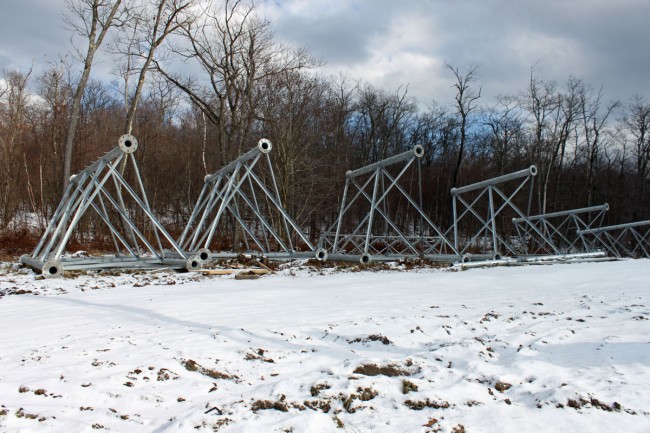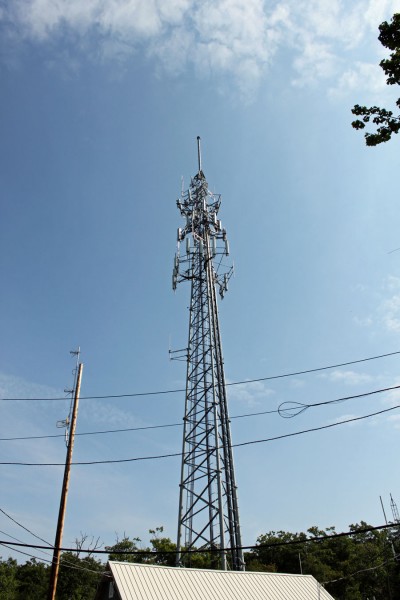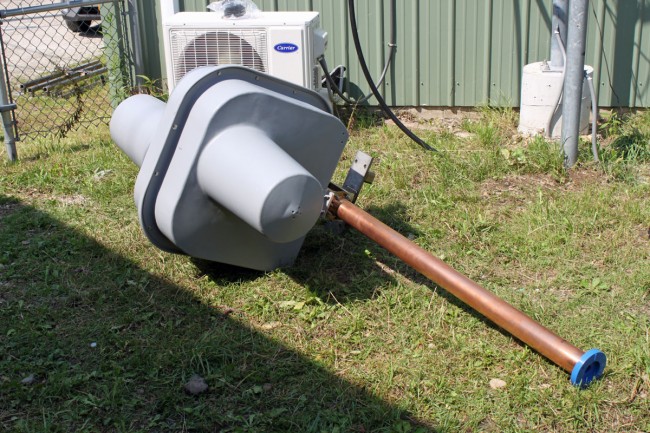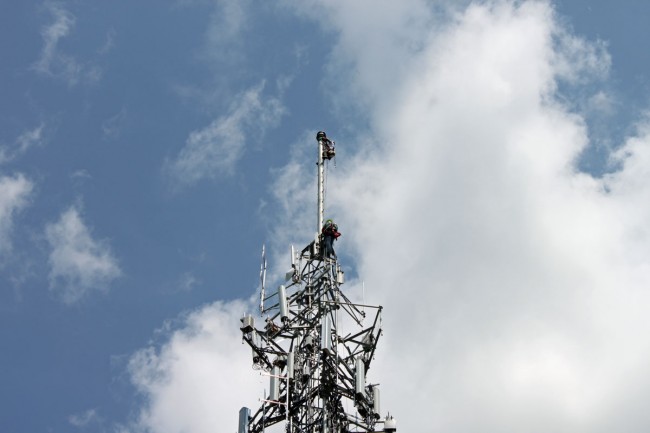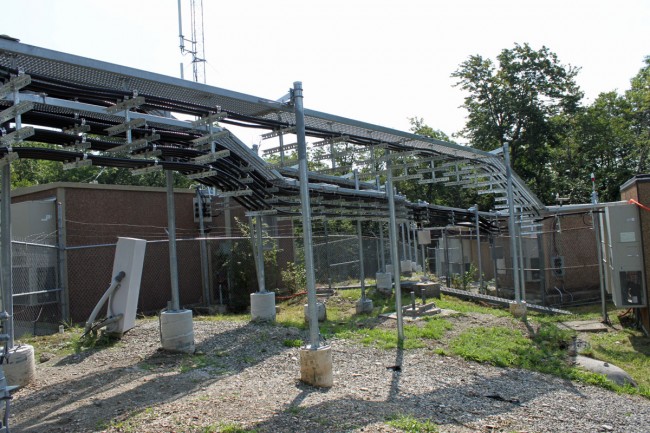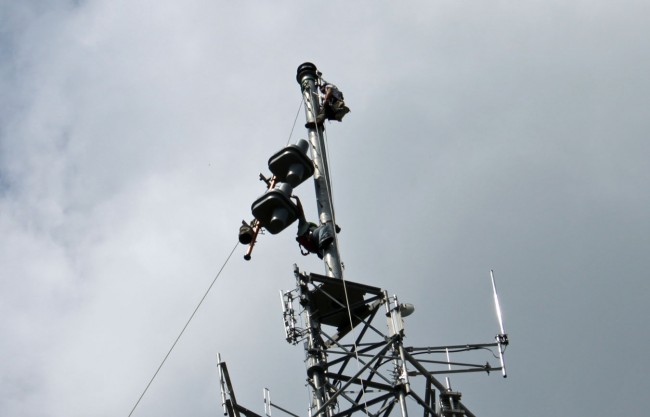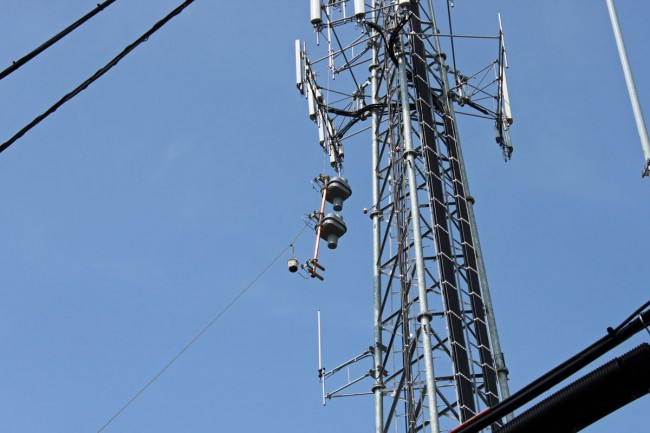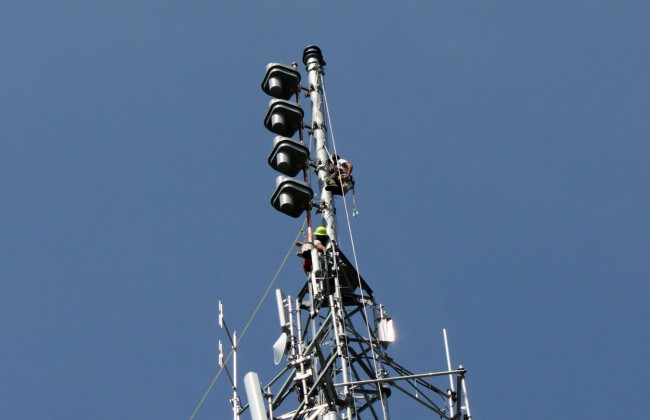This is the first one of these transmitters that I have installed. This particular unit is analog only, but there is lots of room left over for an HD exciter if need be.
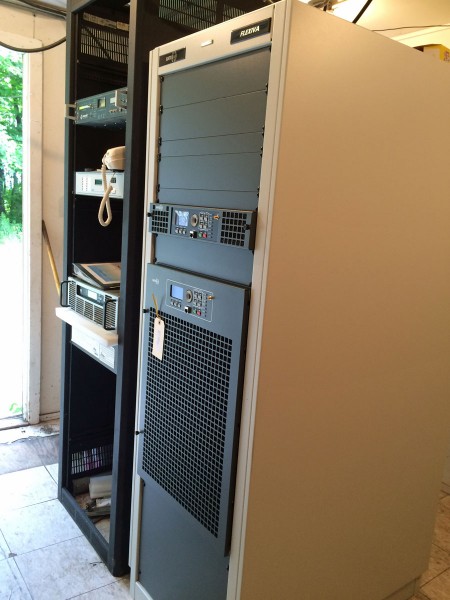
The size of a 10 KW FM transmitter these days is pretty small, basically taking up the equivalent of one rack. This is a relatively small transmitter room, the old tube transmitter basically took up the entire room. With this unit, there is room to install a full power spare, if that was desired.
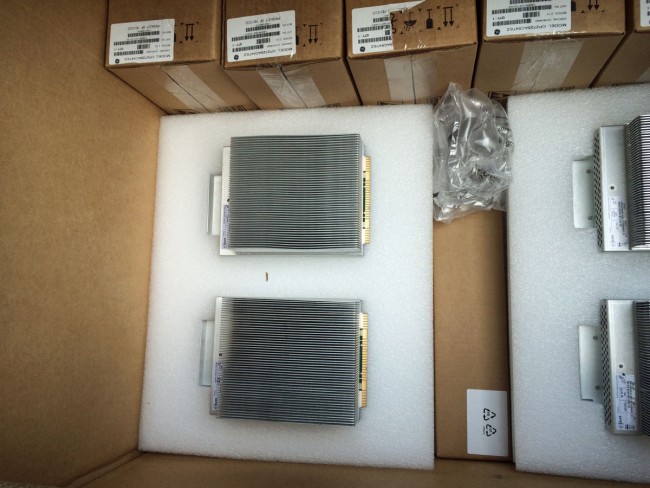
RF modules use LDMOSFET devices, each module has a power output of approximately 1,600 watts.
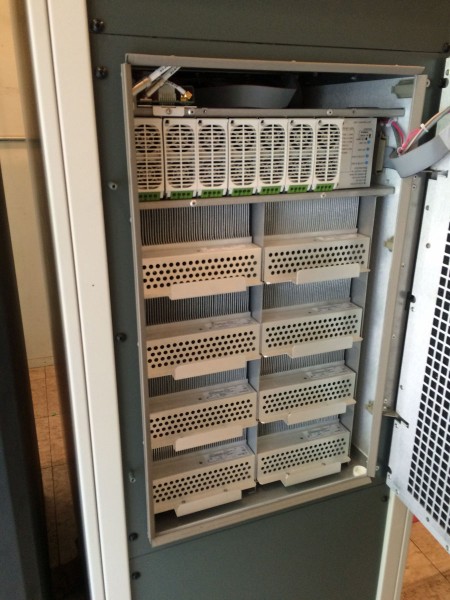
There are eight power amp modules and seven switching power supplies.

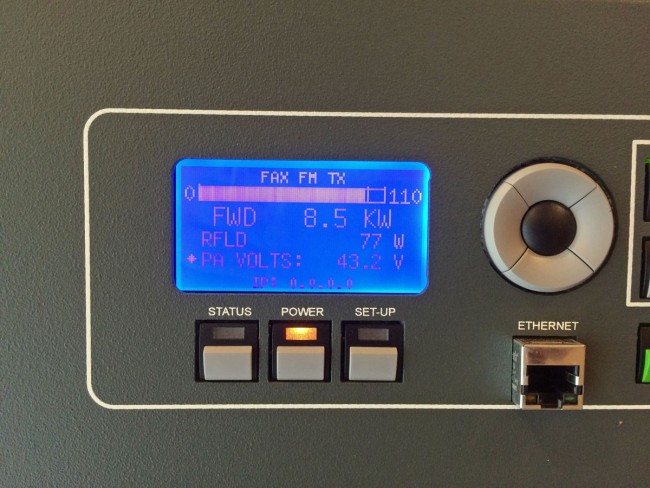
One issue at this site, there is no reliable three-phase power available. There was a three-phase open delta, but man, that thing scares me a little bit. Since this is a single-phase setup, I was curious to know what the current draw on each leg was at full power. I measured with my clamp-on ammeter; 54.3 Amps at 120 volts, or 6516 watts per leg. Overall power draws 13,032 making the AC to RF efficiency 65.2%. VSWR calculates out to 1.21, which is not great. I think the antenna could use a little bit of tuning love.

